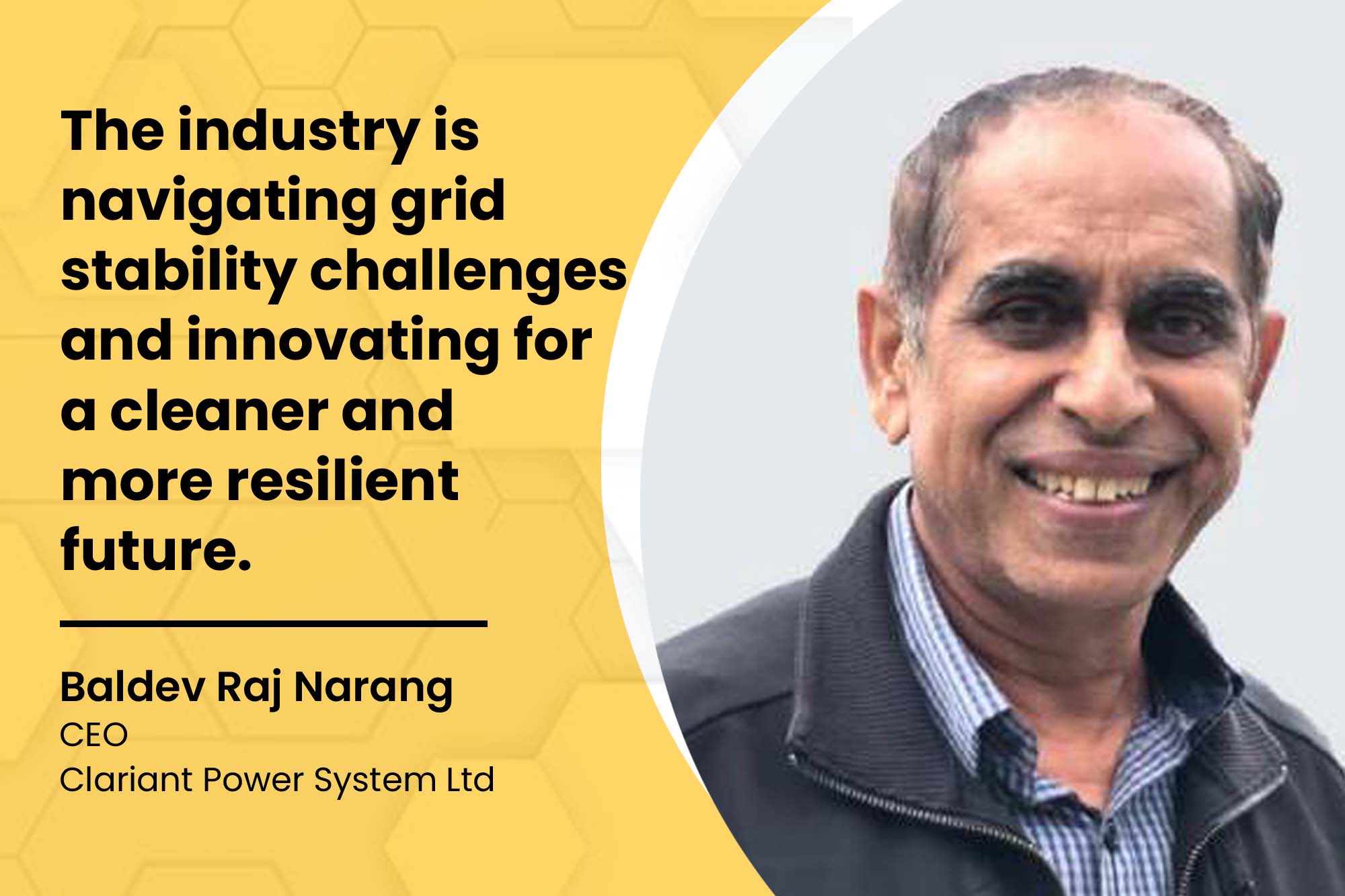Gensets are embracing the renewable wave
By EPR Magazine Editorial December 26, 2023 2:52 pm IST
By EPR Magazine Editorial December 26, 2023 2:52 pm IST

The industry is navigating grid stability challenges and innovating for a cleaner and more resilient future.
A paradigm shift is underway in the dynamic realm of power generation, steering the industry towards sustainability and efficiency. Globally, the ascendancy of renewable energy sources, particularly in nations like India, is reshaping the landscape—however, challenges such as grid stability beckon innovative solutions. Meanwhile, emerging technologies enhance efficiency, fostering a cleaner and more resilient power sector. In this transformative journey, companies are strategising to stay competitive, capitalising on government support and envisioning a future where the power generation sector is both environmentally conscious and robust. Baldev Narang analyses the industry trend with EPR Magazine.
What current trends fuel growth in the power genset sector, and how do they align with broader transformations in the energy sector?
The current trend worldwide in the power generation sector is towards renewable energy sources. India is at the forefront of this transition from fossil fuel energy generation towards green energy sources. The penetration of renewable energy sources in the grid has been gradually increasing, and the initial addition of renewable generation during the last few years has been well absorbed by the energy sector with its existing infrastructure without any major issues.
However, as the penetration of renewable energy sources is increasing quickly, grid stability issues have assumed alarming proportions. The initial penetration has been without any reactive power support from renewable energy sources, thus leading to voltage issues due to the lack of voltage support needed from renewable plants both during steady state and during dynamic conditions at the time of system faults. Most utility-scale renewable plants are coming up at remote locations with poor grid inertia and low SCR values. CEA has now mandated the provision of dynamic reactive power support to 33 percent of plant capacity to overcome the problem.
However, more is needed to resolve the issues. Measures like battery-backed grid-forming inverters and synchronous generators are needed to improve grid stability in the wake of large-scale penetration of renewable energy sources in the grid.

What technologies boost power generation efficiency and sustainability, and how do companies stay competitive in the evolving energy market?
Solar cell manufacturing continuously upgrades, leading to better efficiency and cost reduction. The increased volumes are also contributing to cost-effective renewable energy production. All this is working towards a more sustainable renewable energy sector. In this fast-paced, developing scenario, companies are factoring in the falling costs of resources in their plans and during the tendering stage.
What opportunities exist for industry players to overcome the challenges and contribute to a cleaner and more resilient power landscape?
The push by the government towards the renewable energy sector, accompanied by liberal policies for the energy sector and allocation of government funds, is making available opportunities for the industry players to overcome the challenges. The future energy landscape indeed appears cleaner and more resilient.
Spokesperson: Baldev Raj Narang, CEO- Clariant Power System Ltd
We use cookies to personalize your experience. By continuing to visit this website you agree to our Terms & Conditions, Privacy Policy and Cookie Policy.